Aircrete Blend – 2nd Test
In the second blend I’ll use the same amount of cement and water, a bit less foam and almost a pound of perlite.
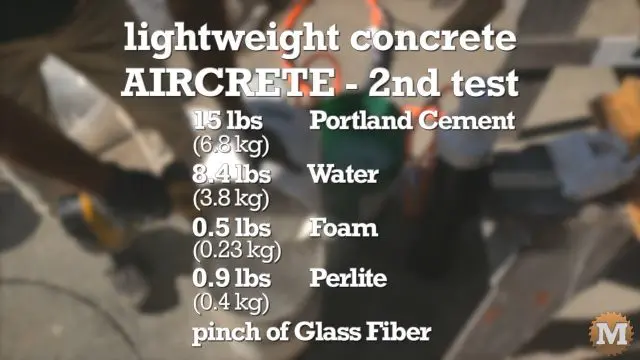
Add Perlite to Aircrete Mix
I want to see how this light volcanic sourced rock blends with aircrete and if it adds any strength or durability. Perlite is a hard, highly porous material made by super-heating volcanic glass.

As before, I slowly add the cement to the water. Then add the glass fibre. Hand stirring to free up any clumps from the sides or bottom of the pail. Then add the foam and blend it again with the drill.

This worked very well. The aircrete had a lumpy consistency but poured well into the forms. I jiggled the form to settle it, then added a bit more to top it up. I smoothed it with a trowel and left to thicken.
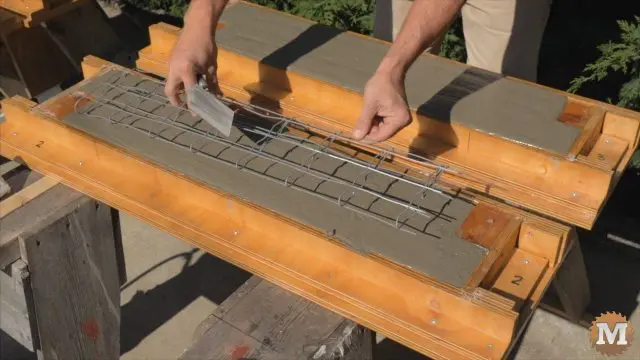
After a few minutes I laid in a double wire grid. I wanted to see if adding two layers of wire grid worked better than just one. To make this grid I simply folded a section of the galvanized fence in half and wrapped the ends into a flattened tube.
I pressed this in and smoothed with a trowel.
Liquid Concrete Dye

For the next test I’ll add about 1 fluid ounce of red liquid cement colour to the water. I’ll leave out the fibre on this one. I make a smooth cement slurry and add the foam. This air crete came out a light chocolate brown colour. I blend it well and pour it into a form. And I’ll lay in a double wire mesh and smooth with a trowel.
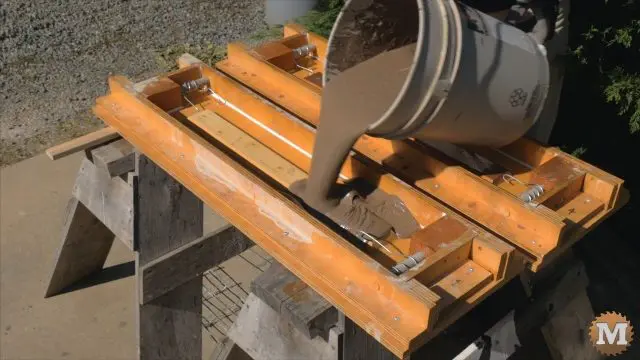
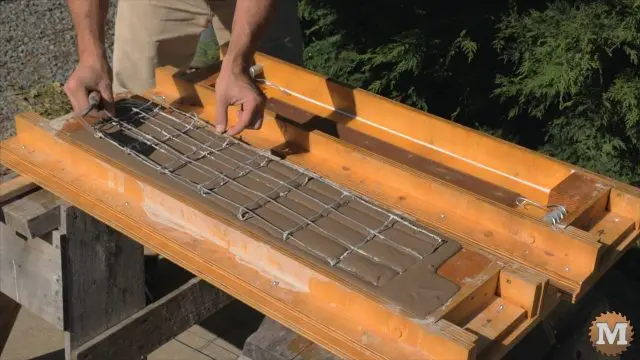
The final test I’ll add black cement colour to the water. Leave out the fibre, but add perlite. I kept the density of the aircrete fairly consistent through these tests. Varying the fibre, perlite, and grid. And a bit of colour additives for fun.
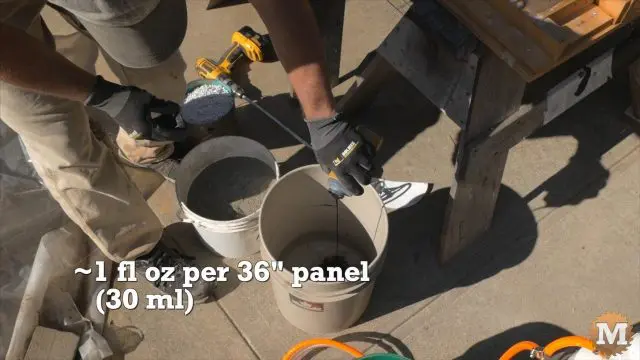
I blend as before and pour into the form. When it starts to solidify I’ll add a single wire grid for reinforcement.

When the aircrete solidified that afternoon I covered the forms with plastic and left them for a couple of days.
I remove all the screws from the form, gently wiggle the sides to free them, then remove the panel from the base and stand it on one side — and then remove the ends. Aircrete is fun to make. It’s involved for sure but not very labour intensive. Everything is blended in a pail with a drill. It’s light by default and has many uses.
(Disclaimer: As an Amazon Associate I earn from qualifying purchases. Thank you for helping to support my content this way. )
